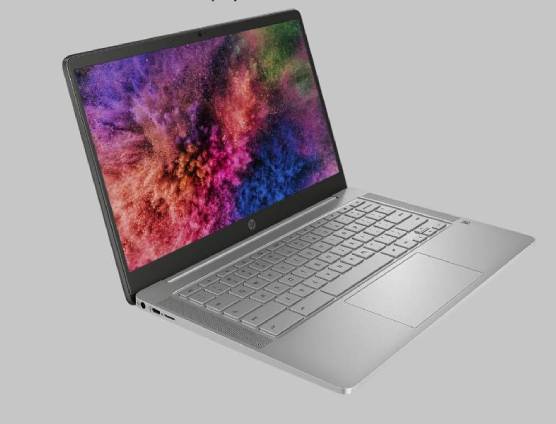
By Anand Parthasarathy
October 5 ,2023: An early morning post on X ( formerly Twitter) on Gandhi Jayanthi day by Google’s India-born CEO Sundar Pichai, made it official:
We’re partnering with HP to manufacture Chromebooks in India - These are the first Chromebooks to be made in India and will make it easier for Indian students to have access to affordable and secure computing.”
Hewlett Packard (HP) has confirmed that its Chromebooks would be manufactured at the plant contract manufacturer Flex, near Chennai
Chromebooks are affordable alternatives to the traditional laptops, made to a design by Google that runs on ChromeO. This is a Google-developed operating system which uses the Cloud as its main storage, thus allowing the hardware -- especially the storage -- to be minimal.
Said Bani Dhawan, Head of Education -- South Asia at Google “The local production of Chromebooks with HP marks an important step in our efforts to continue supporting the digital transformation of education in India. We hope this collaboration will help accelerate the adoption of technology in more schools so that every student and educator have access to the tools and skills to pursue their personal potential.”
Clearly Google and HP have set their sights on an emerging market in India -- ‘connected’ devices for the education sector. And making these entry-level laptops in India allows them to achieve two goals:
One: Keep costs and logistic overheads low by avoiding import duties and having the supply chain inside the country
Two: Supporting the Make in India thrust of the government, even while making HP eligible for the Product Linked Initiatives (PLI) on offer.
HP is no stranger to making laptops in India -- since December 2021, it has been making more advanced laptops including EliteBooks, ProBooks and the G8 series -- models whose prices are mostly upward of Rs 40,000.
On the other hand, Chromebooks – especially the entry level ones aimed at the student market – tend, to cost between Rs 23,000 and Rs 30,000, though discounted prices at Amazon or Flipkart today, indicate you can get a 14-inch HP Chromebook with 4 GB RAM and 64 GB of solid disk storage for around Rs 16,000.
With the memory and storage offered with these starter Chromebooks, there is no scope for loading any useful tools and applications – or for users to save their work for long --on the machine. This means these devices require users to have a stable Internet connection all the time.
Google offers all its tools including popular ones like word processing, presentations and calculating, but through the Internet’s online resources – not resident on the machine. Indeed Chromebooks hold the user in a tight Google embrace of its own apps and solutions.
And therein lies a concern:
Always-on Internet required
How many of the lakhs of students who are the targeted users in India, especially those living in the rural hinterland, can depend on an always-on Internet connection at home or at school or college? Many states are already subsidising laptops for students. And one can make a reasonable assumption that once the Chromebooks start rolling out of the Flex factory, Google and HP will hope to interest more states to select Chromebooks for their student giveaways. The requirement of Internet connection without which these laptops will be seriously underutilised is something that won’t go away.
A study by analysts Canalys in August 2023 revealed that the US accounts for 81% of all Chromebook sales worldwide and that HP is the leading vendor. There is a reason for such large sales in the US: the federal government’s $ 7 billon EmergencyConnectivity Fund (ECF) started during the Covid emergency, which had a target to achieve 13 million connected devices for school children to assist with remote learning. The difference is, schools in the US can also use the fund to create Internet infrastructure – like modems,routers and WiFi hotspotsWho will provide such supporting infrastructure in India: the central government? The states? The school and college managements?
Or maybe Google intends to step in at the right time and help, at least the remotely located institutions, with creating an Internet network that is essential to fuel their Chromebooks.
Google has a record of such public interest initiatives in the past – like helping RailTel to provide WiFi in Indian railway stations and by partnering with the Tata Trust in the Internet Saathi programme for empowering women. Perhaps they will do something similar now.
This has appeared in Swarajya